Outdoor Gym Ideas – Are you looking for ways to stay fit and active while spending time outdoors? Look no further! This article has the best ideas for outdoor gyms that provide a fun and exciting way to get your workouts in. From simple bodyweight exercises to elaborate obstacle courses- these outdoor gym ideas are sure to get you moving!
What do You Need for an Outdoor Gym?
An outdoor gym is an excellent way to keep fit and enjoy the fresh air at the same time. To set up your outdoor gym, here are three key essentials you need:
- Equipment – For a complete workout, invest in equipment such as resistance bands, pull-up bars, medicine balls, etc.
- Location – Choose a flat and spacious area with enough shade for your outdoor gym. Additionally, consider accessibility to water and restroom facilities.
- Maintenance – Keep your outdoor gym clean and well-maintained by regularly cleaning it and storing the equipment when not in use.
It’s essential to have a clear plan of action that outlines what you want to achieve by setting up an outdoor gym. Remember to factor in exercises that target all muscle groups.
If you’re looking to add more variety to your routine, try incorporating parkour-style training, bodyweight exercises, or even yoga. Not only will these enhance your fitness levels but they’ll provide mental stimulation too.
To make the most out of your outdoor gym, be sure to stay hydrated while exercising and be mindful of changes in weather conditions. With these tips on hand, setting up an outdoor gym and leading a healthy lifestyle has never been easier!
Tip: just remember to wear sunscreen and avoid awkward tan lines.
How do I Build an Outdoor Gym Area?

If you’re interested in building an outdoor gym area, there are several key factors to consider. Here’s a guide on how to create your own personal fitness space outdoors:
- Identify the location of your outdoor gym area.
- Determine the equipment that suits your fitness goals and budget.
- Create a flooring surface that is suitable for the equipment selected.
- Select proper storage options for equipment keeping safety in mind.
- Add additional features like shade and water source to enhance the workout experience.
It’s also imperative to consider any local regulations or zoning laws before constructing an outdoor gym area. Remember that safety should always be a top priority.
When creating an outdoor gym area, don’t forget about incorporating landscaping and scenery to create an enjoyable experience unique from indoor gyms. Keep in mind environmental factors like weather should be considered too.
How do I Cool My Outdoor Gym?

When the temperature rises, working out in an outdoor gym can be tough. Here are some tips to cool down your outdoor fitness space:
- Install shade structures like canopies or pergolas to block the sun’s harsh rays.
- Use high-velocity or oscillating fans for better air circulation.
- Incorporate vegetation around your gym area to provide natural shade and cooling effects.
To further enhance your outdoor workout experience, consider misting systems that release fine water droplets into the atmosphere, providing a refreshing mist.
What is the Minimum Size for an Outdoor Gym?
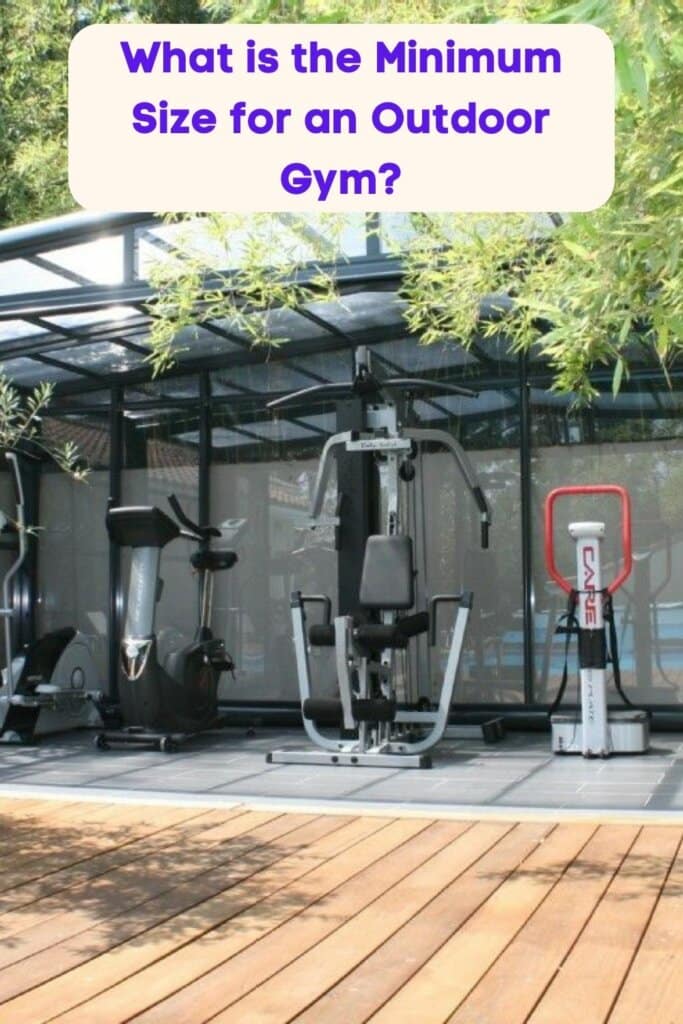
For an outdoor gym, the required minimum size depends on various factors. It is important to consider the number and size of equipment, the intended capacity and usage, and any additional amenities or space for stretching and warm-up. Generally, a minimum of 200-300 square feet per piece of equipment is recommended to allow adequate movement and avoid overcrowding. However, larger spaces provide more flexibility in terms of layout and user flow.
When determining the minimum size for an outdoor gym, it’s essential to keep in mind the type of users. Fitness enthusiasts who require intense workout sessions may demand larger areas with high-end equipment, while casual users may not need much space or equipment. Remember to consider proper spacing between exercise equipment to minimize accidents due to users coming too close together.
If you are planning on designing an outdoor gym that caters to groups like fitness clubs or schools, it will require more space than a personal gym. Understand your target audience before deciding on your outdoor gym size.
Take note that there is no one-size-fits-all answer when it comes to determining the required minimum size for an outdoor gym. It all boils down to your goals and objectives including factors such as anticipated traffic, type of equipment, etc. Missing out on this critical planning stage can severely hurt your chances of meeting those objectives.
Outdoor Home Gym Ideas
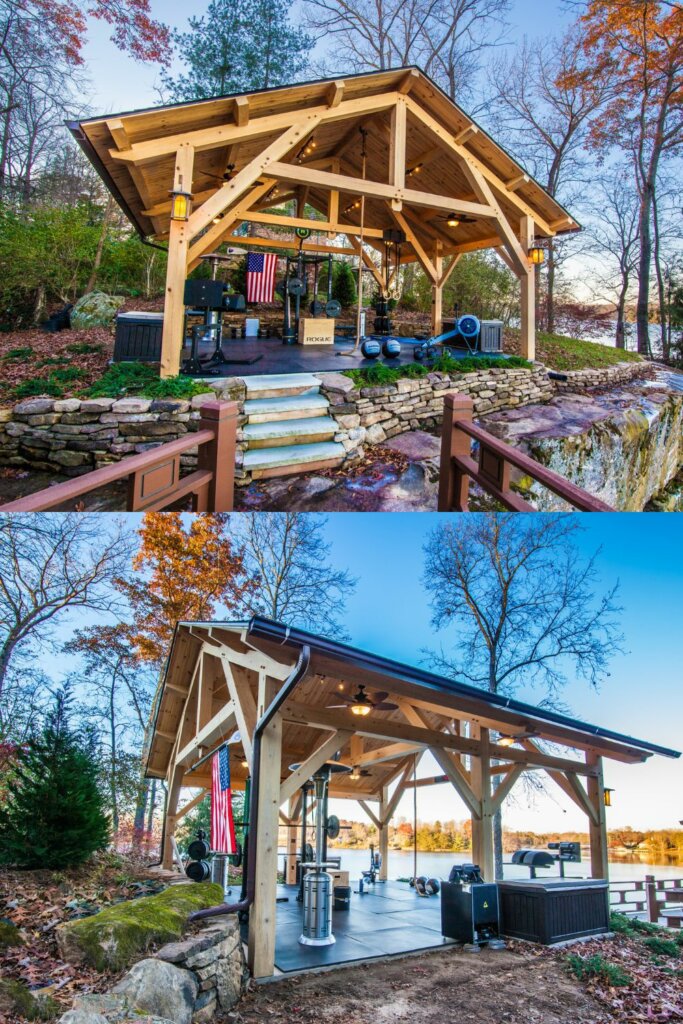
Designing an outdoor gym at home can be beneficial both physically and mentally. Here are some ideas for creating a functional and fun workout area in your backyard:
- Utilize your landscaping: Incorporate natural elements such as trees, rocks, or a hill to create an obstacle course or climbing wall.
- Invest in versatile equipment: Choose equipment that can be used both indoors and outdoors, such as resistance bands, kettlebells, or yoga mats.
- Create a cardio corner: Set up a designated space for cardio workouts with equipment such as a stationary bike, jump rope, or agility ladder.
- Add some shade: Install a pergola or umbrella to provide shade during the summer months and protect your equipment from the elements.
- Incorporate HIIT training: High-Intensity Interval Training (HIIT) is a great option for outdoor workouts. Set up stations with exercises such as burpees, squats, lunges, and push-ups.
- Create an outdoor studio: Consider building a small structure like a shed or repurposing an existing space to create an indoor/outdoor workout area complete with mirrors, lighting, and a sound system.
To take it up another level, consider adding unique features like solar lighting or strategically placed speakers to create an energizing atmosphere during your workouts.
In addition to improving physical health, working out in nature has also been shown to boost mood and reduce stress levels. So go ahead and create your own outdoor home gym for a fun and effective workout experience.
Outdoor Gym Cover Ideas

There are various types of covers that can be installed in an outdoor gym to provide protection from harsh weather conditions and sun exposure. Here are some outdoor gym cover ideas:
- Awnings: These are customizable and come in various sizes and materials.
- Umbrellas: They are cost-effective and can be easily moved around if necessary.
- Pergolas: These structures provide partial shade and add aesthetic appeal to the outdoor gym area.
- Canopies: This is a popular option as it offers full coverage and can withstand extreme weather conditions.
- Tents: Temporary options that offer flexibility, easy transportation, and storage.
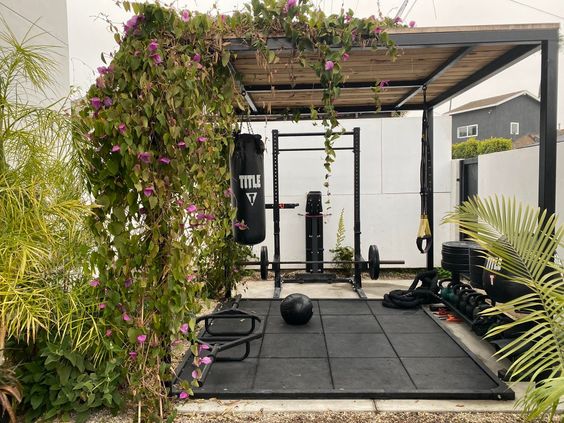
It’s essential to consider the size, material, style, durability, maintenance requirements, and installation process when choosing an outdoor gym cover. Additionally, including multiple covers creates versatility for users.
A suitable type of cover should align with your budget, design preference, structure compatibility, as well as accessibility concerns for people living with disabilities.
Backyard Gym Ideas

Looking to build an outdoor fitness space at home? Here are some backyard gym ideas that will help you get started.
- Create a DIY weight-lifting setup with cinder blocks and sandbags
- Add functional fitness equipment, such as resistance bands and a set of kettlebells
- Hang a heavy bag or punching bag for boxing or martial arts training
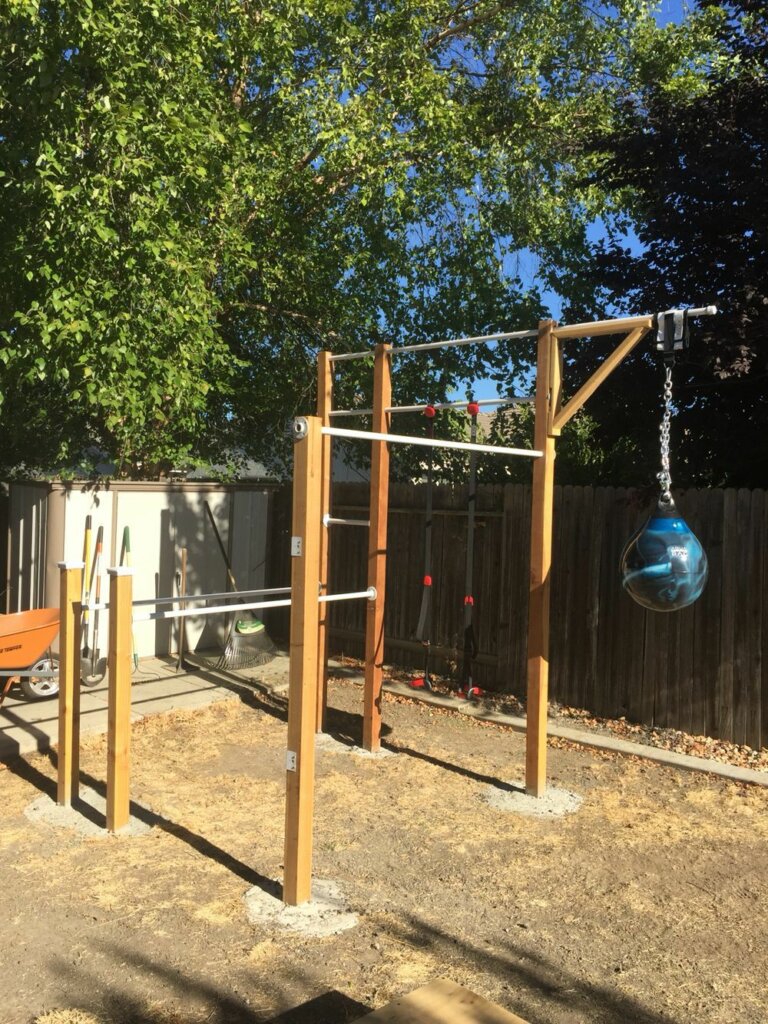
For those seeking unique details, consider adding a rock climbing wall or incorporating natural elements into your workout space. Don’t forget to design your outdoor gym in a way that complements your home’s aesthetic!
DIY Backyard Gym Idea
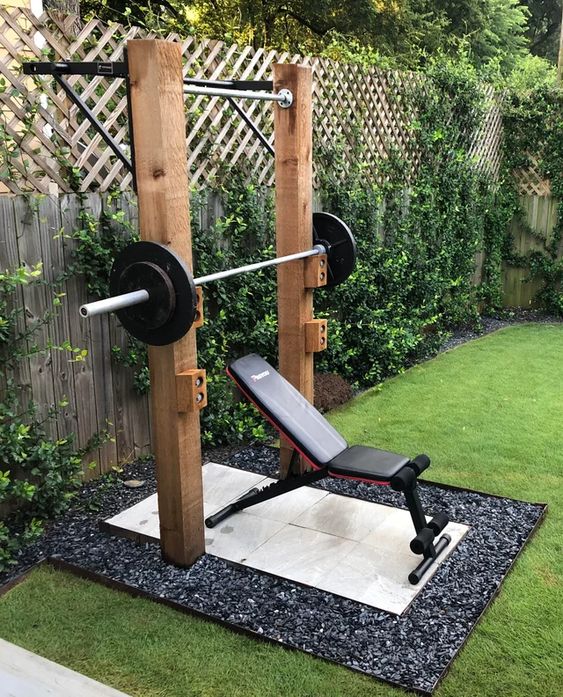
Incorporating fitness into outdoor spaces has become more popular, and creating a DIY gym in your backyard is an excellent way to maintain physical health. Here are three ideas for a backyard exercise area:
- Create a pull-up bar by mounting pipes between trees or using metal brackets on a wall or fence.
- Build wooden squat racks, benches, and plyometric boxes for an affordable and customized setup.
- Add resistance bands to tree limbs or ropes anchored to posts for full-body workouts that add variety to your routine.
To maximize the use of the space, consider installing rubber floor mats or outdoor carpeting beneath equipment. Additionally, planting trees nearby can provide shade while exercising.
If you have limited space available, research mini outdoor gym equipment options like compact stationary bicycles or ellipticals. Remember to consult with professionals before starting any intense workout routines.
Backyard Gym Shed Ideas
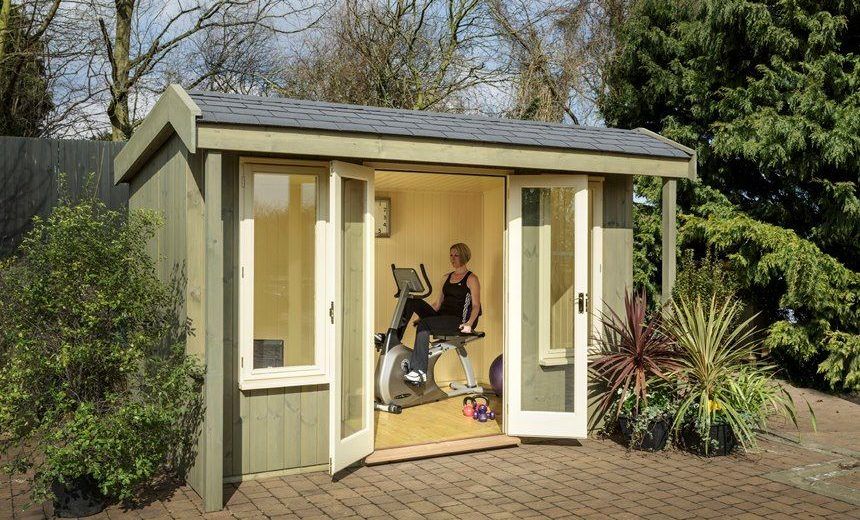
When it comes to designing your personal workout space, backyard gym shed ideas are a great place to start. To create an effective and efficient outdoor gym, consider the following tips:
- Utilize the space: Whether you have a small or large backyard, consider how you can maximize the available space for your gym. For instance, installing wall-mounted racks and shelves can help organize your equipment vertically.
- Invest in quality equipment: Your outdoor gym should be equipped with high-quality exercise machines and accessories. Ensure that you have all the essential fitness equipment like dumbbells, resistance bands, pull-up bars, and weights to cater to various workouts.
- Embrace natural surroundings: Incorporating natural elements into your backyard design can foster a calming atmosphere while enhancing the workout experience. Consider planting greens or incorporating rocks and boulders.
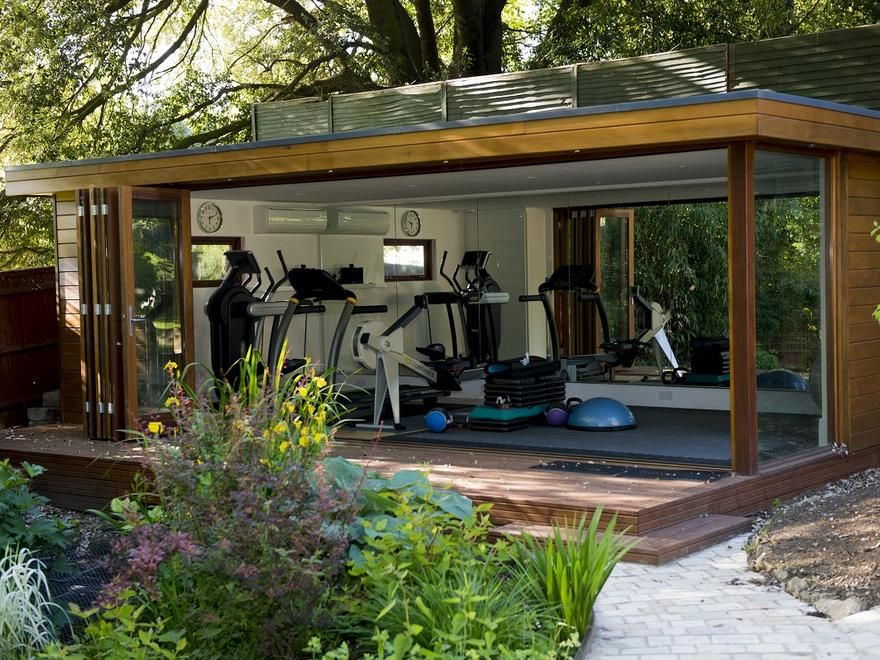
Creating a unique environment in your backyard gym shed will help make exercising more enjoyable and get you motivated. One way to add uniqueness is by installing speakers or lights around your shed— this not only creates an atmosphere but also sets the mood for a good workout routine – Outdoor Gym Ideas
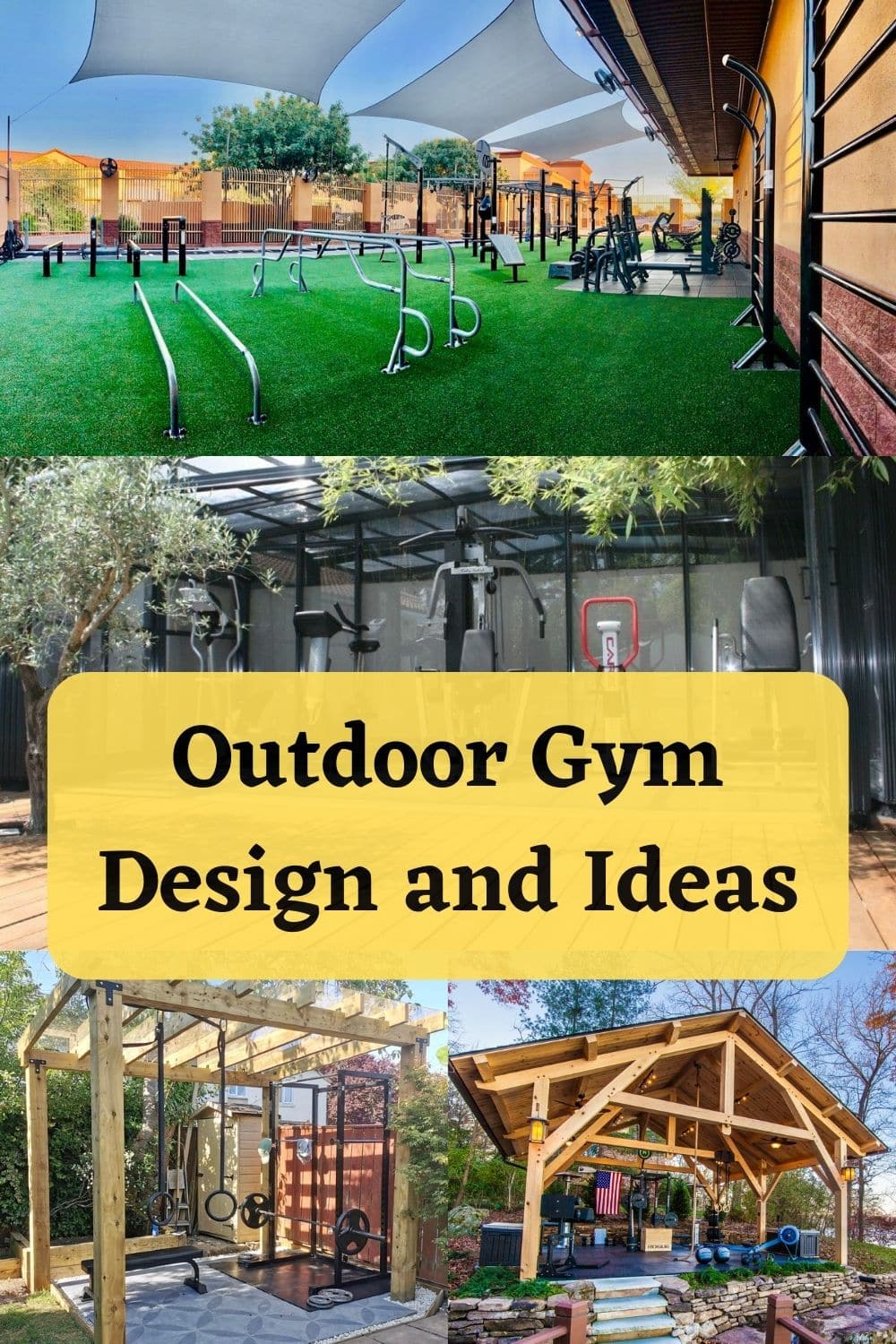


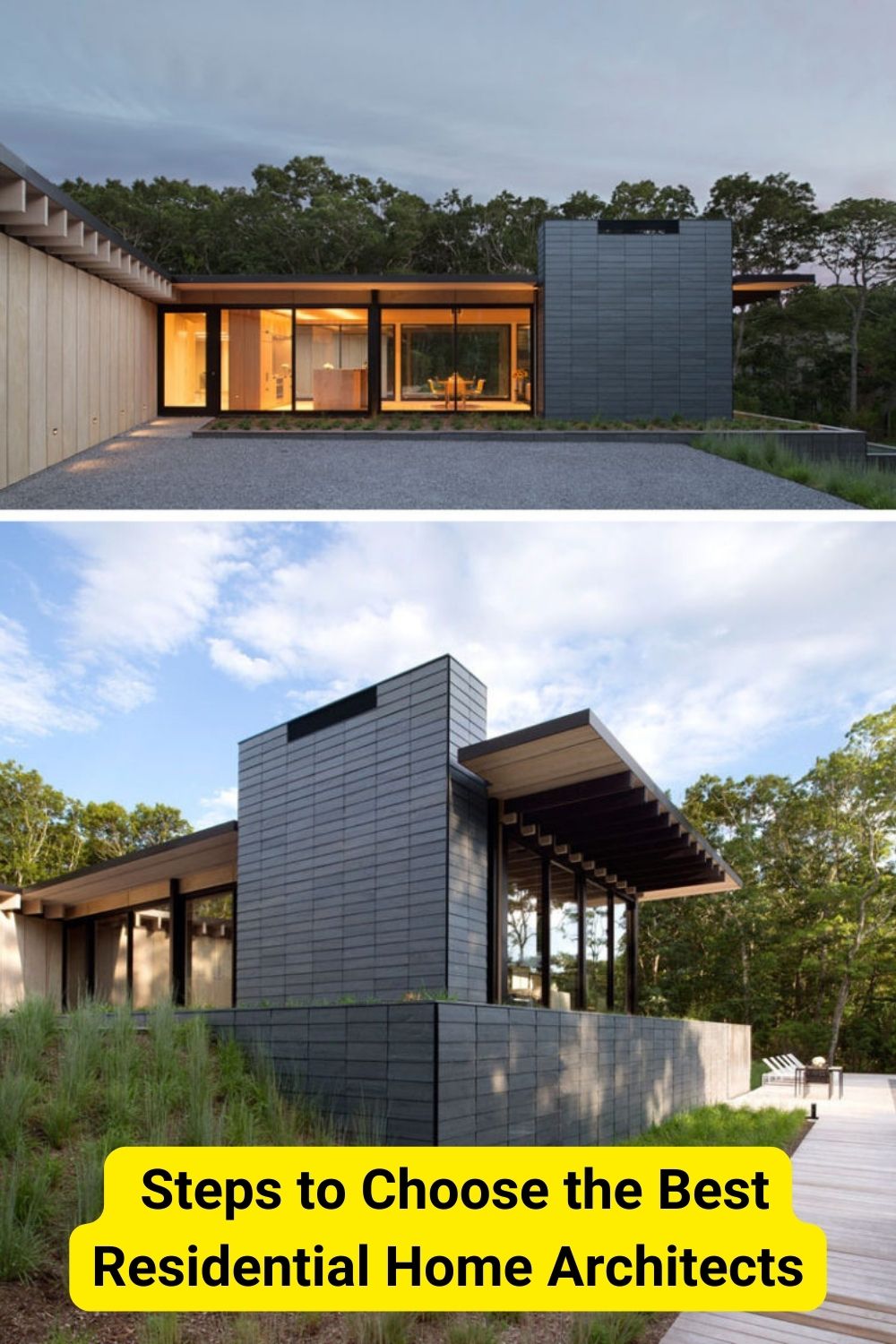

Leave a Reply